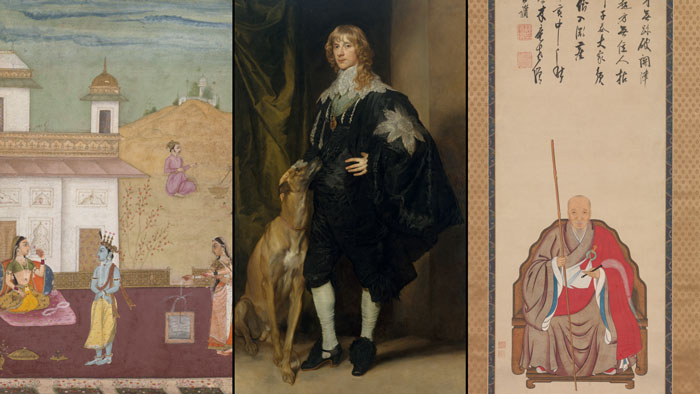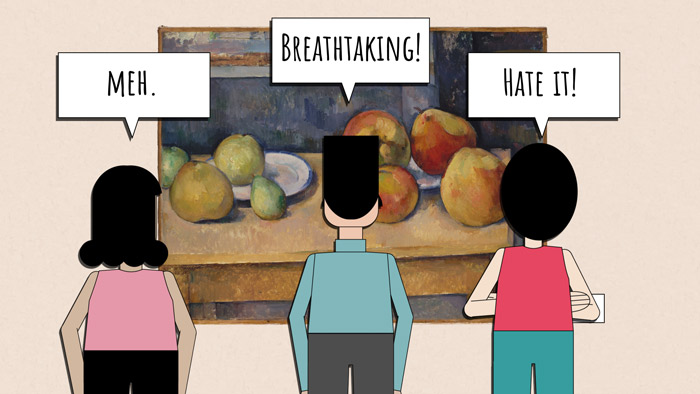Everyone can be creative
Everyone can be creative, where they realize it or not. A lot of people tend to think creativity is binary: Either you have it, or you don't. But in reality, we do all have it. It's just a matter of how we interpret it.
Some people think, I'm not an artist, so I don't really use creativity at work. But it's more than just artistic expression. Whether you're working in retail or you're in an office, or even if you're a professional athlete, you're probably using creativity to make decisions and solve problems on a daily basis.
Creativity is both a skill and a process. It's something you can learn. And like any other skill, it's something you can get better at through practice and repeated use. Now, you might think, I don't have time to sit down and create something every day. This is when it's important to realize the difference between using creativity and actually creating something. In a lot of ways, creativity is all about how you see things.

So yes, you can use creativity to paint or write poems, but you can also use it in practical ways like coming up with an alternate solution for a work project or organizing things in your home.

So the next time you think, I'm not creative, or I'm not as creative as some other people, take a step back and really take a look at what you do on a day-to-day basis. You might be surprised at how often you're using creativity.

Breaking through a creative block
When you're on your creative A game, firing on all cylinders, it's a great feeling. But what about the opposite end of the spectrum, when you find yourself struggling and the creativity just isn't flowing? How do you break through this creative block?
When we hit a creative block, it's often stressful. And this stress can stifle our creativity even more. It can sometimes be helpful to step away from a project or focus on something else entirely.
Alfred Hitchcock, the director of films like Psycho and Vertigo, sometimes struggled while working on screenplays with co-writers. They'd hit a creative block, which led to heated arguments about the script. Out of nowhere, Hitchcock would start telling a story about something completely unrelated. It would seem random at first, but he was intentionally trying to take focus away from the project and remove the stress from the situation. So if you're stuck, feel free to take a break or do something else. An idea may just come to you while your mind subconsciously processes things.

Another common tactic is using creative constraints. A constraint is a kind of rule you place on yourself that determines what you can and can't do during a project. For instance, if you're painting, maybe you only allow yourself to use a limited number of colors. Studies have shown that constraints cause people to produce more varied results because there are less choices to make.
They can give you a nice starting point to jump off of as well. For example, Dr. Seuss constrained himself to using only 50 words when writing Green Eggs and Ham, resulting in one of the most popular and creative children's books.

When we're in a rut, we often spend a lot of time thinking about what to do instead of actually creating. So a third method for breaking through a block is to just create something. Anything. Don't worry so much about the outcome. The goal is just not to be not creating.
Thomas Edison, the famous inventor, was a big proponent of this. He believed that in order to find a great idea, you have to generate many, many ideas. For example, it took him thousands of different theories and failed experiments to invent a practical and cost-efficient lightbulb.

When you hit a creative block, it's easy to panic. But it happens to everyone. There's no right or wrong way to deal with one. It's up to you to find what works best on a personal level.

The dangers of perfectionism
While you may feel that being a perfectionist at work can make you a better employee, did you know that it can also make you less productive?
Being a perfectionist might mean that you spend too much time on tasks, trying to get them just right. This could backfire, causing you to neglect other tasks and duties. A good way to remedy this is to set deadlines for your projects and stick to them, rather than working on something until it's perfect.

As a perfectionist, you may also believe that others can't do the work as well as you can. This may leave your coworkers with the feeling that you don't trust them. You'll also likely end up giving yourself a larger workload than you can handle. If this is the case, try delegating tasks when appropriate. Remind yourself that there are many right ways to solve a problem, not only the way you do them. If your coworker has a different solution, give them a chance to try it.

It can be challenging to change these habits, but avoiding perfectionism can lead to increased productivity and a better rapport with coworkers.
What is art?
When we hear the word art, some of our minds jump to museums or framed paintings. And in that context, some people think, I'm not really a big fan of art. I just don't get it. Or maybe they think of art as something that's just for intellectuals, or artsy people.
But really, art is for anyone who wants to experience it, and it's often in more places than we might realize. Songs you like, movies you watch, poems, theater, even a quilt that your grandmother made: All of this, and more, is art.
So you might be wondering, Well, then, what is art exactly? This can be tough. Art has been around for thousands of years, and through the ages it has evolved in a number of ways. The reasons for creating it vary from person to person, depending on any number of factors as well, so defining art is pretty tricky and is something that's been debated throughout history. There simply isn't one agreed-upon definition.

Many believe that art is anything that stirs emotion in you. These emotions depend entirely on your history, your story, basically everything that comes together to make up who you are. Because of this, three different people can experience the same piece of art and have wildly different reactions to it. One person might think it's the most beautiful thing they've ever seen, the second person might hate it, and the third might not feel much of anything at all. And none of them would be wrong!

Everyone's entitled to their own preferences and feelings. The way you feel about your favorite song could be the same way someone else feels about their favorite sculpture. And even though you might not like that sculpture, it can be valuable to consider why that person enjoys it so much. You may learn something about them and maybe even yourself.

The term art is really just a label. Over the years, a lot of people have tried to classify what it is or what it isn't. But that's not really what art is about; it's about your personal experience with it and the meaning you draw from it. Everyone reacts to art differently and has the potential to grow and learn from it. It gives us an opportunity to tell stories, record history, and tap into our emotions in a way that few other things can.
Comments
Post a Comment